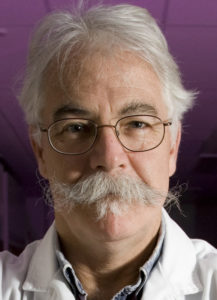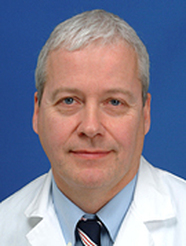Professor Alan Mackay-Sim is the Director of National Centre for Adult Stem Cell Research in Australia, and Professor, School of Biomolecular and Physical Sciences, Griffith University, who visited Mary Verghese Institute of Rehabilitation Institute in the Bagayam campus of Christian Medical College (CMC), Vellore on December 6, 2011.

He is one of the world’s foremost authority on this subject and the first to try olfactory ensheathing cells on humans with SCI. Alan is scientific director of a clinical trial in which cells from the nose (called olfactory ensheathing cells – they are not stem cells) are taken from persons with paraplegia after SCI, grown in the lab and transplanted into their own injured spinal cord.
What would your advice to persons with spinal cord injury on pursuing stem cells as a possible treatment?
There are no stem cell treatments in the world today that have been fully tested in all stages of clinical trials. Part of the process of clinical trials is to report the outcomes and open them to public scrutiny for others to judge.
Yet `treatments’ using stem cells for persons with SCI is taking place in several countries, including China, Russia, Brazil and India. Such treatment is not based on scientifically proven evidence that stem cells make a difference, partially or wholly, which means risks and benefits remain unproven.
We know illnesses and injuries can change with time and that a few improve without treatment. There is no concrete evidence that it is stem cell treatment that leads to improvement of any sort in a person with SCI.
Clinics offering `stem cell therapies’ do not state what cells they are transplanting, do not provide evidence of how the cells work in animals and whether they work in humans. Statements and testimonials from former patients placed on websites or in newspapers is not `evidence’.
In this backdrop, it is important that every person with SCI adopts a rational approach. I understand several persons with SCI are spending vast sums on stem cell treatment in the hope of improvement. This is a sad state of affairs.
Persons with SCI must not go in for treatment using stem cell or olfactory ensheathing cells in any part of the world, as there is a long way to go to have a scientifically proven approach that also works. The money that is or could be spent on stem cell treatment must be used to improve the quality of life in other ways and not be wasted in this treatment now.
You can read the full text of the conversation with him by downloading this document.
Treating paraplegics with stem cells

DTreating paraplegics with stem cells, Armin Curt is a professor at the University of Zurich and Director of the Spinal Cord Injury Center at Balgrist University Hospital. He is currently leading one of the few clinical studies with adult neural stem cells aimed at treating people with severe spinal cord injuries. The study examines whether stem cells could be used to regenerate fully or severely damaged neural pathways in the spinal cord. Curt describes the initial results with three patients as “promising”.
How far advanced is your clinical study with neural stem cells?
Which patients did you treat?
How are the stem cells administered?
We inject the stem cells below the level of the spinal cord injury into the neighbouring “healthy” spinal cord. We give the patients a fixed dose of a total of 20 million stem cells. The patients are then closely monitored.
Do you already know more about how the therapy works?
That’s still not quite clear. On the one hand, it might be the cells themselves that replace the damaged cells and lead to an improvement. On the other hand, it might also be the molecules that these stem cells produce and that activate and stimulate other cells.
Do you know what exactly happens to the stem cells after they are injected into the body?
We can’t find this out in detail because we cannot mark the cells in order to track them in vivo. Hence we cannot tell how many cells remain near the spot where the injection was given and how many spread to different parts of the body. This is a problem in most stem cell studies on humans, a lot more is possible in studies on animals.
Where do the problems lie?
In order to inject the stem cells, a major operation is needed to expose the spinal cord. This entails significant risks. In addition, the patients are required to take immunosuppressive drugs so that the cells are not rejected. These drugs can increase the rate of infection, which is in any case higher in patients with spinal cord injuries.
Out of sheer desperation, many paralysed people travel to India, China or other countries where they are given some form of treatment in dubious studies with stem cells. Have you ever had any similar enquiries from patients?
All the time. My estimate is that thousands of patients worldwide must have already received treatment in such uncontrolled studies.
What do you say to patients who ask you for advice?
I tell them that there are no indications that these therapies have any effect. We have examined such patients ourselves: before leaving and after their return. We could not find any improvement in their condition. However, we have no idea what sort of cells these patients were given – or if any cells were injected at all. Although only a few cases with severe complications are known, we urgently advise patients to stay clear of such dubious practices. Patients who have taken part in such uncontrolled therapies cannot be considered for any controlled studies in the future
You are currently working with adult stem cells. Will you soon be studying induced pluripotent stem cells?
I tell them that there are no indications that these therapies have any effect. We have examined such patients ourselves: before leaving and after their return. We could not find any improvement in their condition. However, we have no idea what sort of cells these patients were given – or if any cells were injected at all. Although only a few cases with severe complications are known, we urgently advise patients to stay clear of such dubious practices. Patients who have taken part in such uncontrolled therapies cannot be considered for any controlled studies in the future.
Of course, we are closely watching the rapid progress made with these cells. But it’s still too early for us. We need better data on the safety of these cells before they can be of clinical interest to us. Even the question whether these cells are actually more potent than the adult neural stem cells with which we are working has not been answered once and for all.
Source:
http://www.nfp63.ch/E/knowledge-transfer-and communication/interviews/Pages/curt.aspx

 by
by